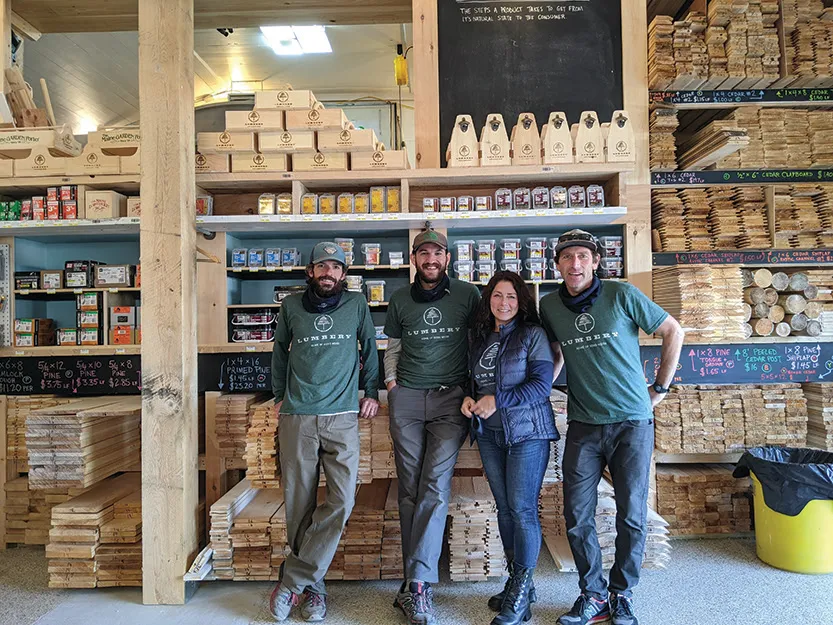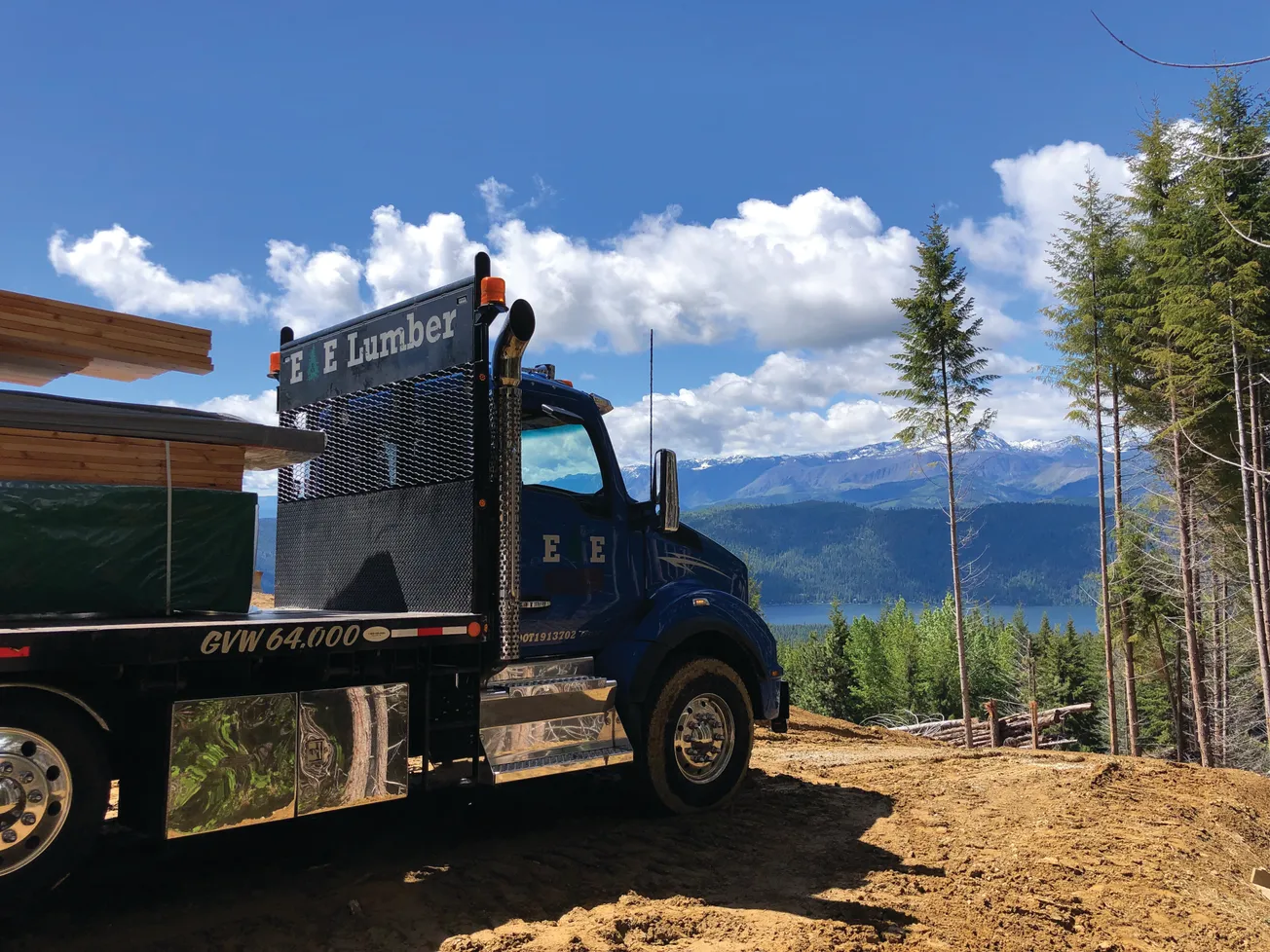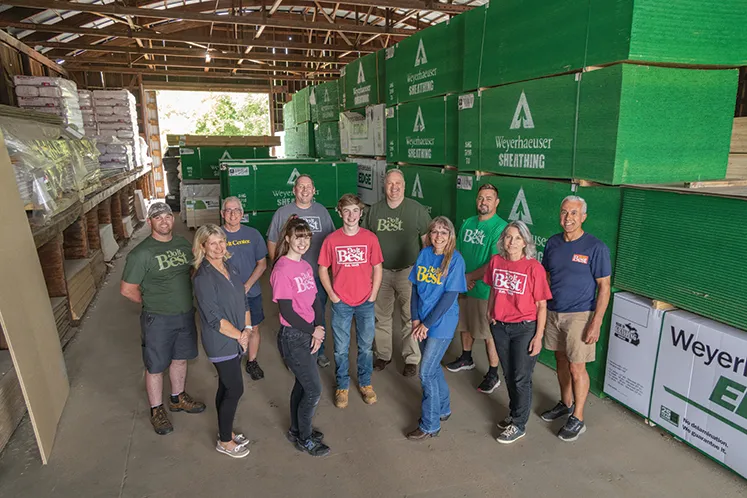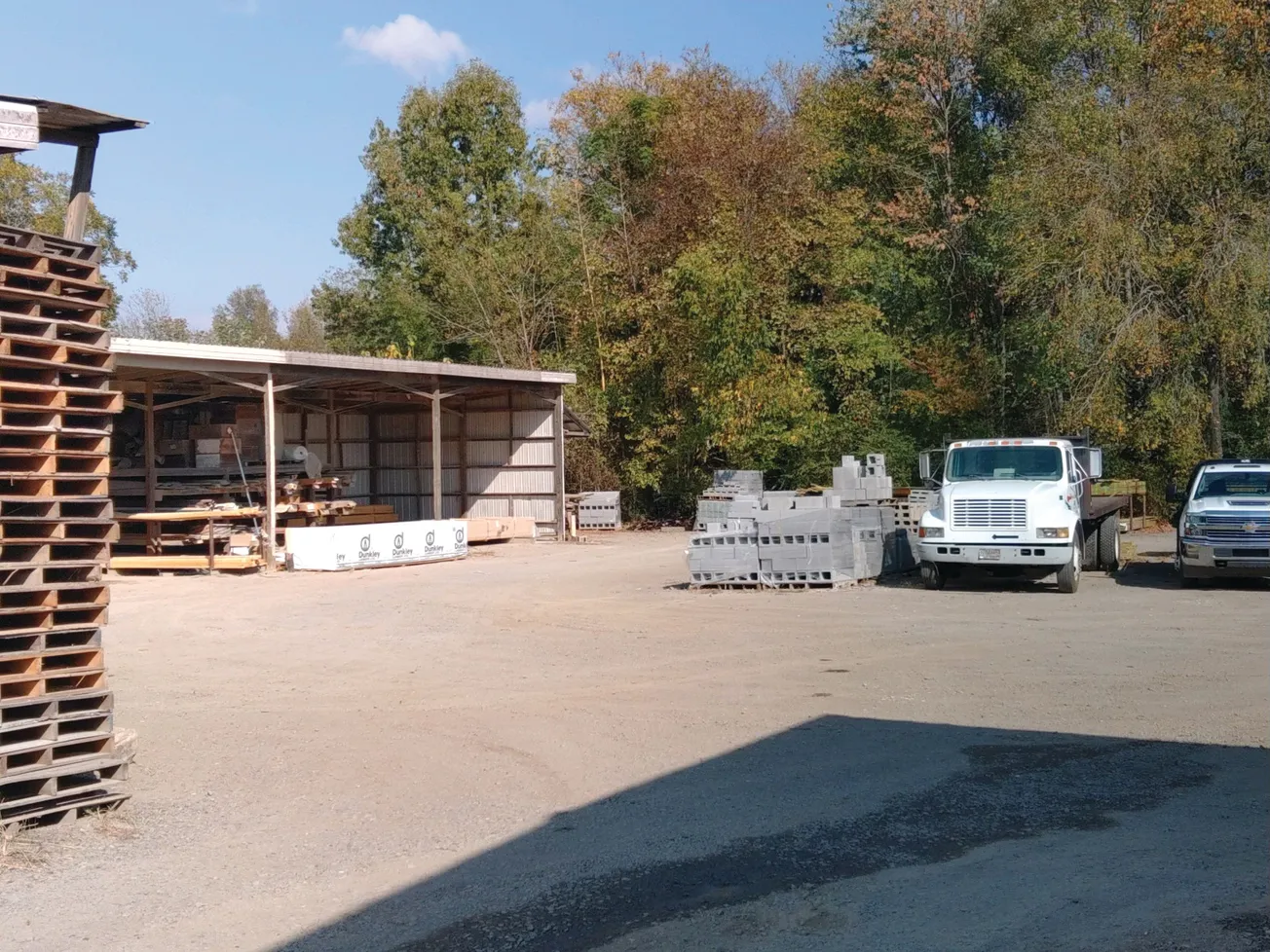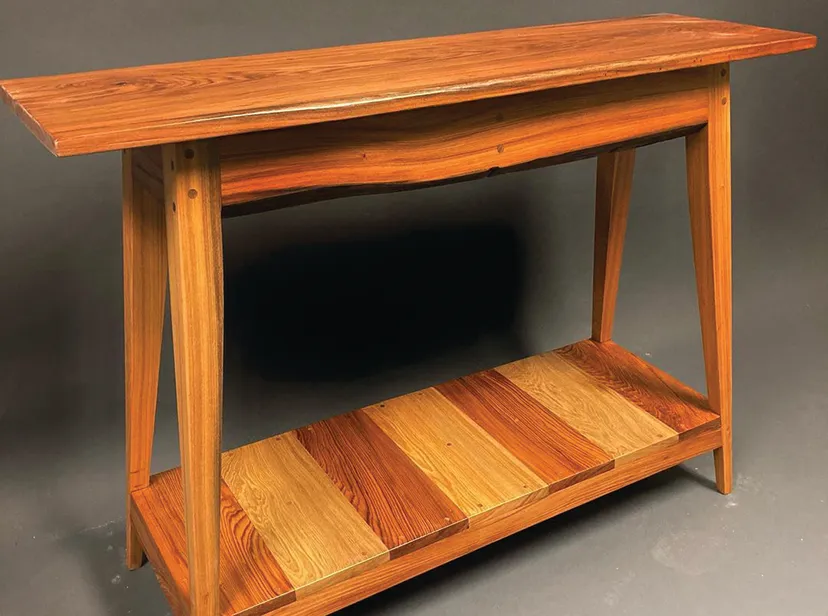Table of Contents
The light bulb moment occurred when Mike Friedman ran out of space. Mike had launched a home-repair business in Portland, Me., in 2005, which, as he reports, “grew-grew-grew. We’d started out in a basement, then moved to a larger space, then bought a building, but even that wasn’t big enough, with us doing so many little jobs. We had $1 million in sales and 200 handymen. We needed wood storage—everything from plywood to drywall—because we had to drive 35 miles for, say, a 2×4. We also had a huge garage filled with refuse we’d hauled out. So we needed a bigger place to keep more wood on hand and to sort the trash.
“We found a convenience store in Cape Elizabeth,” a town of 9,300 15 minutes away. “Prices were cheaper out there: It made sense,” he explains. His partners—his sister and two carpenter buddies—agreed.
Then came the epiphany that birthed Lumbery last November. “We’re not the only ones who have to drive for wood. Besides, the quality of wood and the service level at the boxes was terrible. We needed quality wood and a place to store it that was convenient. Plus, most lumberyards around here are closed weekends, just when the do-it-yourselfers need them. Besides, the bigger outfits wouldn’t deliver to the smaller stores.”
Conclusion: “We gotta sell wood!”
At first, they envisioned a hybrid outfit: home repairs and wood sales. But covid nixed that. Homeowners became reluctant to let a handyman into their home, and those fellows were equally hesitant to enter them. “So… we paused. We let all our employees go off on their own with our blessing, supplying references and contacts. Then the four of us had to learn everything from computer programs to how to find dealers and reps for hardware.”
The four partners quickly fine-tuned the original epiphany (“Sell wood!”) with another—and more ground-breaking—one: Sell Maine lumber. “We’re living in a state that’s 90% trees, but the little mills here get bypassed by the giant distributors. There’s no connect between the sawmill and the consumer: Zero!” So, modeling their practices on those of the revered Patagonia clothing firm, they decided to make their credo the chain of custody.
“We’re asking ‘Where was the tree located? Is the forest sustainable? What does the mill do with its waste? How did the lumber get to our store?’ By buying Maine wood, we’re lessening the environmental impact plus helping out a small town. And people are more and more eager to ‘buy local.’ Ads promote ‘Get to know your farmer.’ But who’s asking, ‘Get to know your lumber dealer’? Next, we needed town approval (that was a bear!); it took longer and more money than we’d envisioned. But,” Mike continues in a “Don’t worry, I’ve got this” tone, “We opened in November!” (Readers, to view the insane progress of converting a convenience store into a lumberyard, go to lumbery-me.com. Click on Our Roots, scroll down to Video and be prepared to laugh—or at least, sympathize. The music accompaniment, appropriately named, is “Startin’ Something.”)
The Grand Opening was a huge success. “People didn’t know about us, but we had a 2,500-customer list, and I live here, so I have personal contacts in the area. I knew builders, but we also marketed it through Googling ‘Builders within 20 miles. Architects. Painters. Marinas.’ Instagram, Facebook and the local press, too.
Finding product that followed the chain-mantra was no problem. “In Maine, all wood is SFI (certified sustainable), so mills are not an issue. Within a 40-mile radius, you’ll find Eastern white pine and Eastern white cedar (not red, from the Northwest). In Maine, white cedar is what we all use as wood for saunas,” Mike explains.
“Then, chain-wise, figure out who the loggers are and how they’re treated (There’s a Master Logger certification program) and mills with 2x4s, 2x6s—not coming in from Canada, Idaho, overseas). Pressure-treated is still from out-of-state, but we’re pushing for using tamarack, the obvious local alternative.
“With chain of custody, there’s a ripple effect, from the mill to the town that’s helped out, beside the product itself. It’s crazy,” Mike muses. “Here in Maine, we love our local lobsters and would never buy one from Florida. But with pine…there’s not that sense yet. Customers might perceive that it [chain of custody] costs more, and of course we can’t compete with Home Depot. But our service is so much superior, too. We’ll teach you how to build that sauna. We’re like supporting a microbrewery vs. Coors,” he says, hoping to win that same kind of shop-local customer loyalty.
Lumbery’s customers are primarily (70%) walk-ins, who report to Mike they’re “totally thrilled” to have the outfit open. “The site was abandoned for seven years, so every single person in town has come in to say, ‘Glad you’re here’ and ‘Thank you so much.’”
The outfit’s recent Grand Opening advertised 30% off lumber prices, “and with those prices being sky-high lately, folks came in from all over the state. Not much profit, but good marketing. Plus, they liked the convenience (‘Saved ma a trip to Home Depot’) and the quality (‘How straight everything is!’). They don’t mind paying a bit more for that. Now they’re asking for live-edge wood and reclaimed wood, so we’ll look into that.”
The event also helped soften a first-timer’s scare of approaching a lumberyard (“Massive!”) which some—especially women—perceive.
Product mix presented no problem. Mike notes, “I know homeowners’ needs from my years as a handyman—housewrap, insulation, caulk, ladders, extension cords, dropcloths…. But, this is not a hardware store.”
Instead, it’s a tool library. “From the repair business, we owned 50,000 tools we weren’t using anymore—everything from ladders and power washers to flooring guns. Everything! It was just sitting there, so we decided ‘Let’s let people use them.’ Not rental,” he emphasizes—“more like borrowing a library book.” Customers learn of these benefits from the newsletter Mike distributes—“more like a blog, very personal; but it mixes in notices of our sales.”
And allays the impact of the competition? Oh, excuse me: Lumbery doesn’t have any. According to Mike, he’s the only act for miles, except for a hardware store in town, to whom he refers customers.
Along the way, he’s learned a few lessons, both on the build-out and on the town’s policies. But he’s already started a list of future needs, starting with a traceable chain of custody beyond the mill (a Forest Service grant application is in the works). “We also need to hire a marketing agency and to expand here on the property. And we’re super-eager to become involved in the community—school sports teams, the local land trust.
“It’s funny,” he muses. “A year ago, I was a handyman….”

